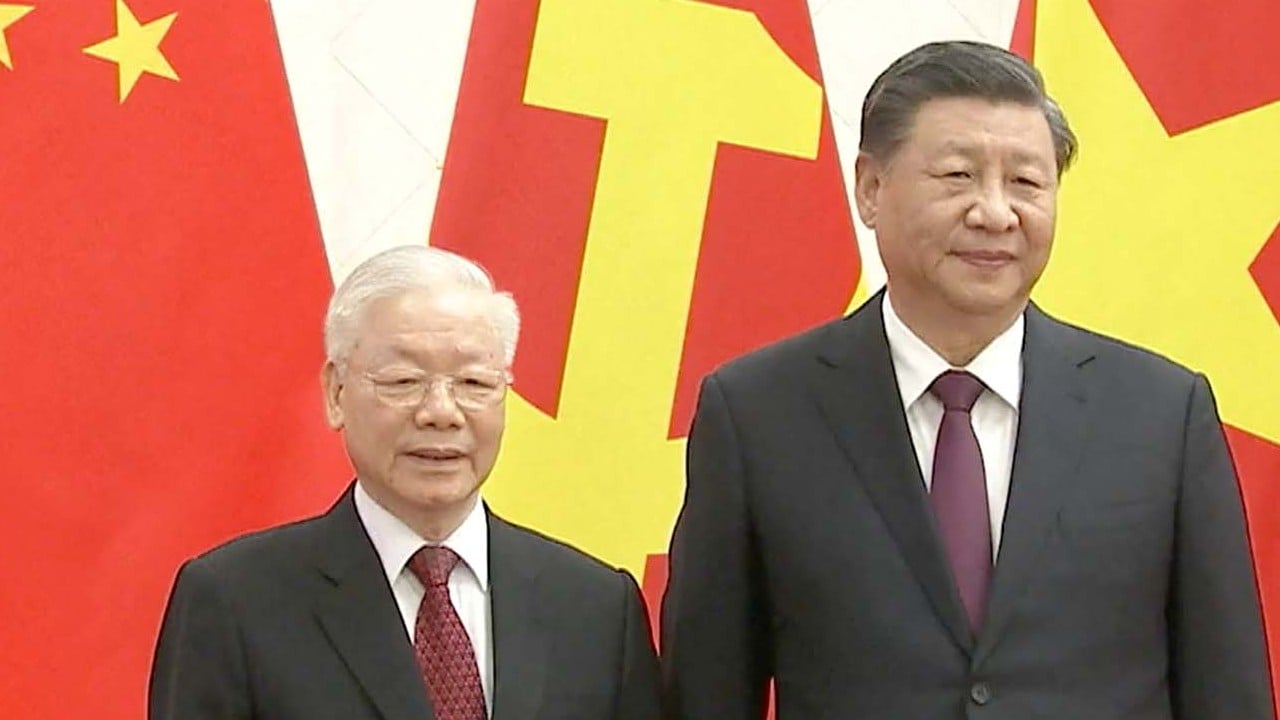
China factories with Asean aspirations are lining up for a look at Vietnam, and industrial parks are cashing in
- The just-concluded China-Asean Expo in the Guangxi Zhuang autonomous region shows how Chinese manufacturers are increasingly keen on diversifying supply chains
- Moving production could save China’s exporters money and help avoid US sanctions, but some warn of increasingly strict rules of origin among Western importers
The number of Chinese manufacturers waiting to inquire about moving their factories to Vietnam was like no other at a just-concluded annual expo of Southeast Asian businesses.
Nguyen Thi Nga, a sales executive for Vietnam’s Deep C Industrial Zones, still had more than a dozen potential Chinese clients waiting for her to take questions after an hour-long business-networking session attended by more than 300 people on Sunday.
“There has really been a lot more interest from Chinese businesses since last year,” Nguyen said in fluent Mandarin at the four-day China-Association of Southeast Asian Nations (Asean) Expo. “It has especially boomed this year, after the pandemic.”
Nguyen was representing one of Vietnam’s biggest industrial zone developers at the event, which ended on Tuesday in Nanning, the capital of the Guangxi Zhuang autonomous region. More than 2,000 businesses from the 10-member Asean and China attended the annual forum, with many seeking to secure new business opportunities.
‘Innovation is everything’: what fast-growing Vietnam is learning from China
The sales executive said that half of around 30 Chinese clients - including chemical, electronic and solar panel manufacturers - in all of Deep C’s five zones, have only been on board since 2022.
“We are expecting more to join,” Nguyen said, adding that seven to eight more Chinese investors will move in by the end of this year.
While Vietnam has been a favoured destination among manufacturers that have moved out of China to avoid tariffs since the US trade war kicked off in 2018, competition in the region is expected to intensify, in terms of luring investment from China.
Vietnam’s comparatively stable political environment and a young, low-cost workforce – the third-largest among all Asian nations – has long made it a manufacturing and export hub in the region.
We are hearing from Chinese businesses that they are already looking for places other than Vietnam
China was the fourth-largest foreign investor for Vietnam in 2022, and the US remained the largest investor, according to statistics provided by Vietnam’s Ministry of Planning and Investment.
However, businesses and trade experts have been forecasting a tightening of rules of origin among Western importers, especially in the US. This could result in further scrutiny of companies that source components from China but assemble them in places such as Vietnam to avoid tariffs.
While this could extend beyond Vietnam, a sales manager from a Malaysian industrial park said at the expo that it could present an opportunity for them to appear as a more attractive option for Chinese investment.
“We are hearing from Chinese businesses that they are already looking for places other than Vietnam because that loophole is under increasing scrutiny, and the same level of checks has not appeared in other Southeast Asian countries, yet,” the manager said on condition of anonymity as he was not authorised to speak to the media.
‘We choose to engage’: Asean chief calls to dial down US-China tensions
While the Malaysian industrial park only has a few Chinese clients so far, the manager has travelled to China at least once every month since the beginning of the year to solicit business.
“The fact that we have relatively well-developed infrastructure – and most importantly, a big Chinese-speaking population – makes us an attractive destination as well,” he said.
However, for many Chinese companies seeking to shift to Southeast Asia, cost is still a top concern.
Pan Junxian, who owns a company that supplies building materials in his hometown in the eastern coastal province of Jiangsu, attended the expo to look for a potential site to move at least one-third of his production chain out of China.
But Pan said he was shocked to learn that he could save only about 20 per cent on his labour costs by moving to Vietnam, compared with what he pays his Chinese staff. He also discovered that Thailand was an attractive option, with its relatively cheap natural gas supply.
“My factory would use a lot of electricity, so I need to carefully calculate which location helps lower costs,” he said.
Pan, who used to have more than 100 workers in his China factory, laid off half of his workers during the pandemic to cut costs. He said he is looking to gradually scale up his business again, but his priority for now is cutting costs and finding new export destinations.
“I am not confident in expanding my business in the next few years, considering the sluggish economy both at home and internationally,” Pan said. “But if companies that buy our products for manufacturing move out of the country, we need to move, too.”


